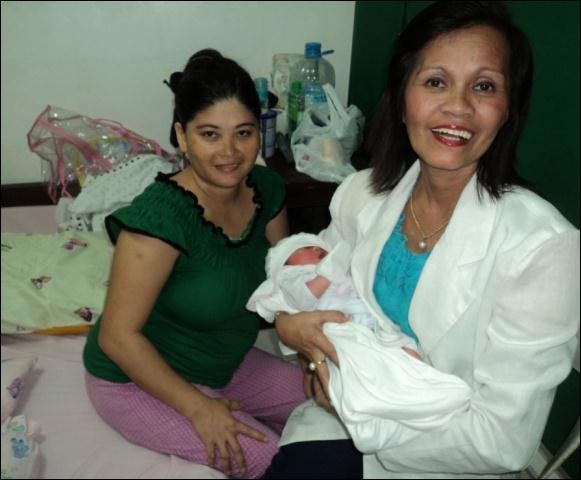
In Bohol province in the Philippines, a weary mother watched as a midwife approached the rickety hospital bed where she sat. Her newborn lay feverish in a corner at the edge of the bed beside two other newborns and their mothers; one infant possibly with a rising infection. This was typical in government-owned hospitals, but for Corazon "Azon" Paras, the attending midwife, it did not seem fair that mothers and their infants should be in this plight.
Born to a poor family herself, Paras knew the frustration of not being able to afford quality health care. Upon becoming a registered midwife, she began her career caring for the poorest of communities in Bohol. At the government hospital, Paras worked within the limits of the public health system. Congestion was one of the pressing challenges.
In 2003, Bohol had one hospital bed for every 1,000 people. Most rural health clinics do not have birthing facilities, leaving poor pregnant women with no option but to settle for crowded government hospitals for obstetrics care and deliveries. Since most government health facilities have limited health providers, women usually could not get the quality care and emotional support that they needed from health providers.
When Paras was elected president of the Integrated Midwives Association of the Philippines (IMAP), in Bohol, affordable quality health care became the association’s mantra. In 2003, Paras and 15 fellow midwives set up the Lying-in Clinic Inc. (ILCI), the first private lying-in birthing clinic in the province.
It drew mothers from low-income families and averaged 40-60 deliveries per month. The venture had to deal with financial constraints. Angela Rances, one of the midwives, explains: “The fees we received were just enough to pay the electricity, water and basic supplies. It took almost a year before we had our salaries. But Azon was undaunted. She prodded us to go on.”
Paras' commitment eventually paid off. She underwent USAID-supported business training and gained leadership skills through IMAP. With USAID support, Paras mentored 224 midwives to operate their own birthing clinics. She also encouraged all ILCI clinics to qualify for accreditation with the Philippines’ health insurance that entailed linkages with back-up doctors to protect mothers’ lives in case of birth complications. The success of the first ILCI spurred the interest of some 200 member-midwives of IMAP-Bohol. Since 2009, 11 more lying-in clinics were established to attend to the needs of mothers. In 2011, three more ILCI clinics were established in Bohol. From 2007 to 2011, the birthing clinics attended to about 6,000 deliveries. By March 2012, ILCI branched out and established seven clinics in nearby Negros Oriental province.
Today, quality health care has become more accessible and affordable for the Boholanos. Provincial data show that maternal deaths decreased from 51 per 100,000 in 2007 to 12 per 100,000 in 2010.
Jondee Galiposo, 35, who hails from a town 100 kilometers away from the regional hospital, delivered her second child at one of the ILCI clinics upon the suggestion of a neighbor. “I like it better here. My neighbor was right to tell me about this place. It is very nice and affordable. I am happy with the way you (Azon) helped me give birth and took care of me and my baby.” For Paras, it is stories like this that make the years of hard work worthwhile.







Comment
Make a general inquiry or suggest an improvement.